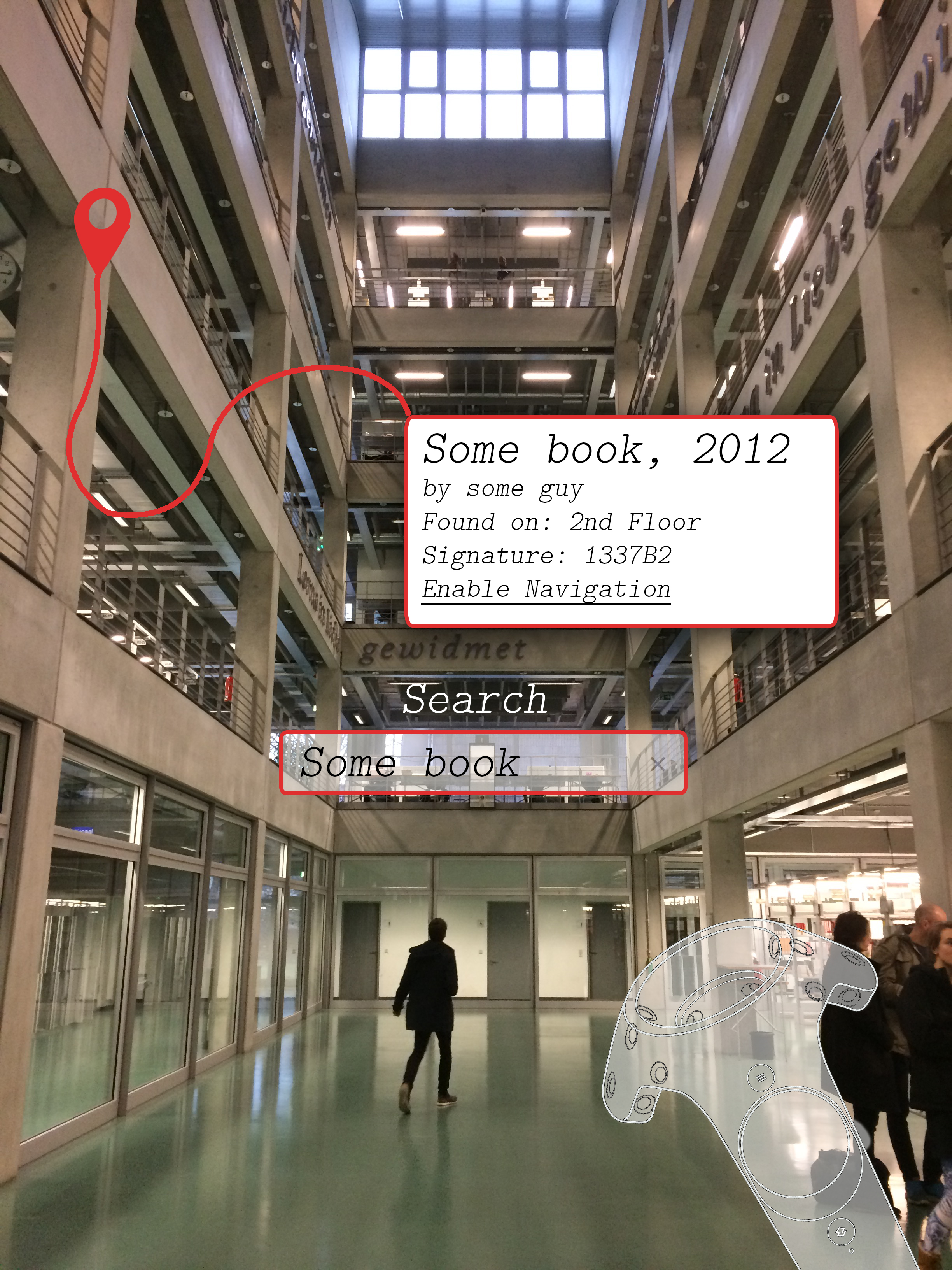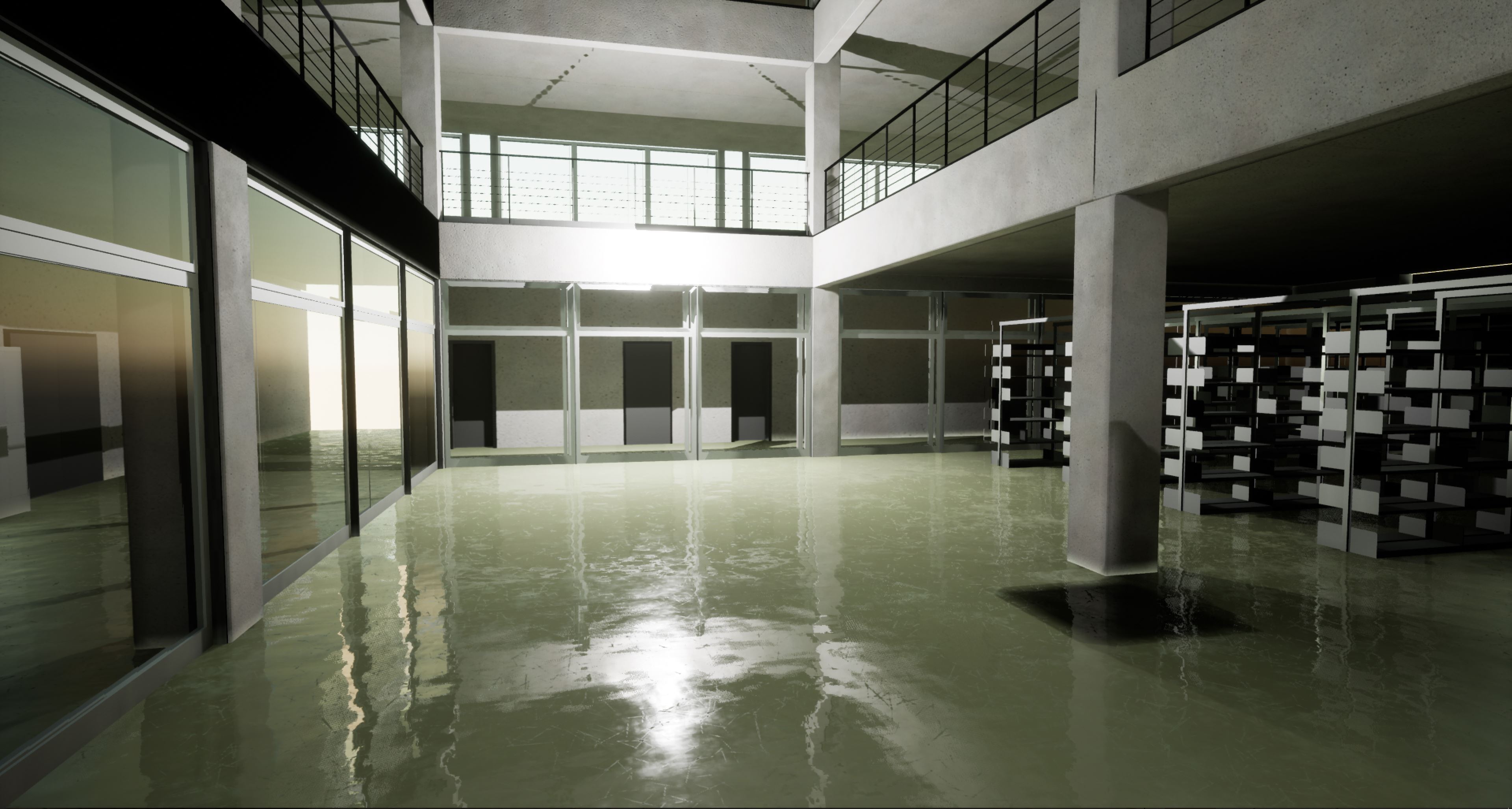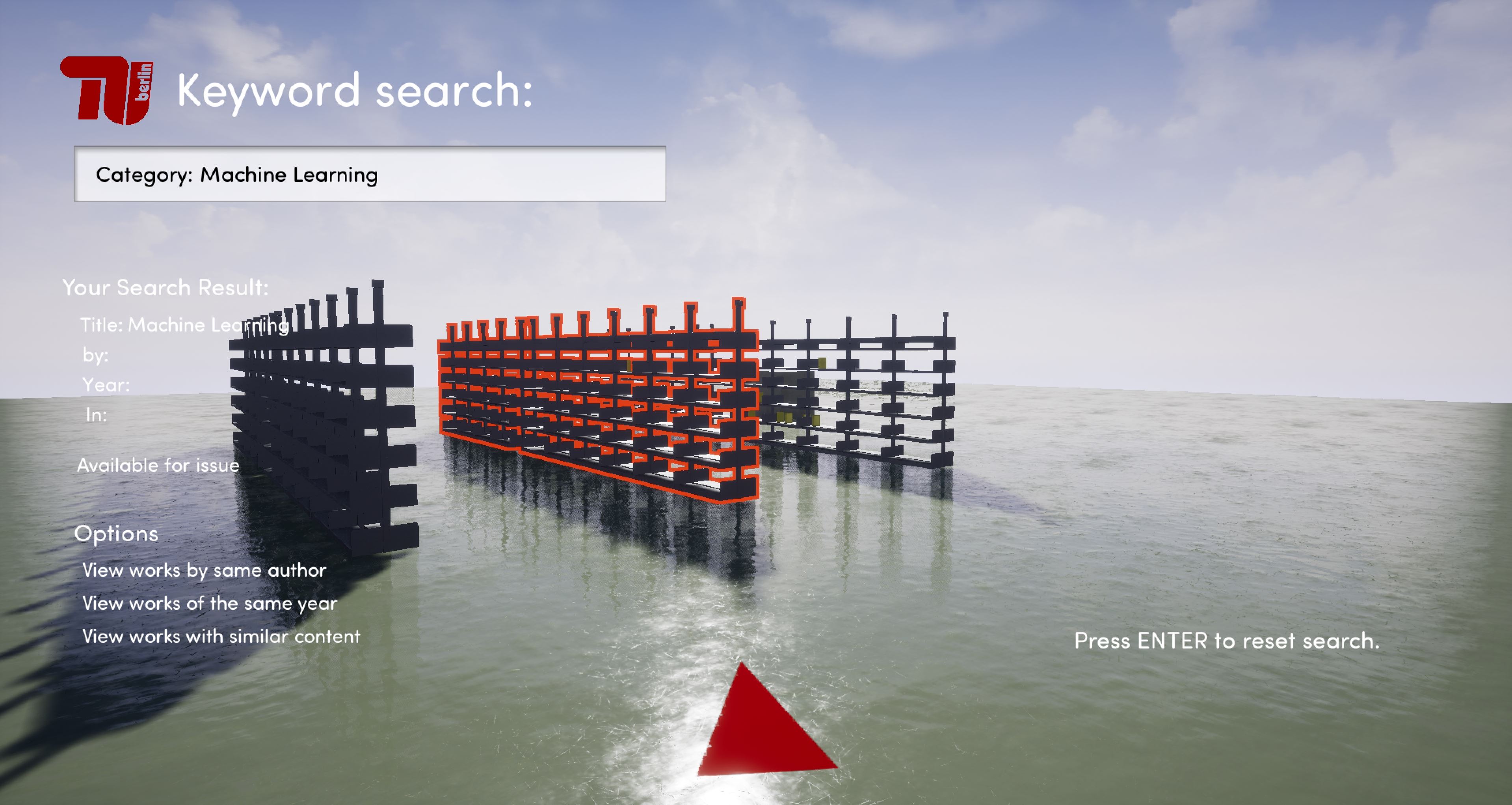Imaging & Interaction
Using a library today, the process consists of using the digital catalogue to check out the availability of the requested literature. From the catalogue, one can learn about the library location, the floow, the shelf and the book signature. Afterwards one goes to the library location and follows the spatial structures to locate the requested book. The room is vertically/horizontally structured by subjects. Shelfs server different categories. In the shelfs, books are mostly sorted by content and at the same time lined up by signature number.
Library spaces as pieces of architecture must enable for such a structuring of space. The ability to structure space like that is one of their central design parameters. This fact is so obvious to us that we never question it. Just as little, we question the catalogue interface that communicates between our request and the spatial structure. It translates our "author, title, year"-language to the library logic of "location, floor, shelf, signature"-language and the other way around.
While this is not a bad procedure, it creates many rigid classifications and thus restrictions. The project investigates on the renegotiation of these classifications by overlaying the digital catalogue with the physical space in Virtual Reality (VR). Here, the VR application servers the simulation of an Augmented Reality (AR). The question which new structural connections emerge for the physical space if it is extended by digital information layers shall be contemplated.
Foremost, there is the fundamental change of interaction with the space. While the interaction currently proceeds through catalogue, location, floor, shelf, signature as described above, the digital extension of space makes the room itself become an application. Specifically speaking, one could say that you no longer use apps on your smartphone but directly in the space you are situated in. When you henceforth search for a book, the room will directly communicate where to find this book. The interaction proceeds directly between space and user but no longer through external interfaces. The project "The library as an app" assumes the smartphone as a tool of interaction for the user to "control" the room. The AR glasses server the display of the information provided by space. In concrete terms, the user looks for a book using his phone and the library room communicates the location of the book through the AR glasses.
By detaching the book from the signature system, restrictions of classifications are discarded. While in the traditional model of the library, the book is restricted to one spatial context, it may inherit several contexts in the augmented library. The tree structure of location, floor, shelf, signature is replaced by a complex map of available information. In this manner, a book may be put in spatial context to other books of the same author with no effort. The same accounts for other meta data, like year/month/day of publication, publisher, location and other information available in the digital catalogue.
Additionally, a spatial connection by usage statistics is conceiveable. Which books are often issued with the requested book? What are the most issued book of the last 3 months/ of the last year/ of all time? What books are new in the library? There are also interesting possiblities of linking emerging by a potential digitalizing of the library stock. That way the literature list of the requested book could be directly located in the library by request and a literature network in relation to requested book could be created quickly using the above relationships.
While this project is merely exemplarily examining possibilities in simulation, the technological requirements for a practical realization are already present in theory. At the end there is the question how the digital layers of information in physical space could influence architecture. How will a library be designed in a future where physical objects are no longer restricted to one spatial context?
Video installation presented at "Long Night of Science Berlin" in 2017 along with the playable VR app


